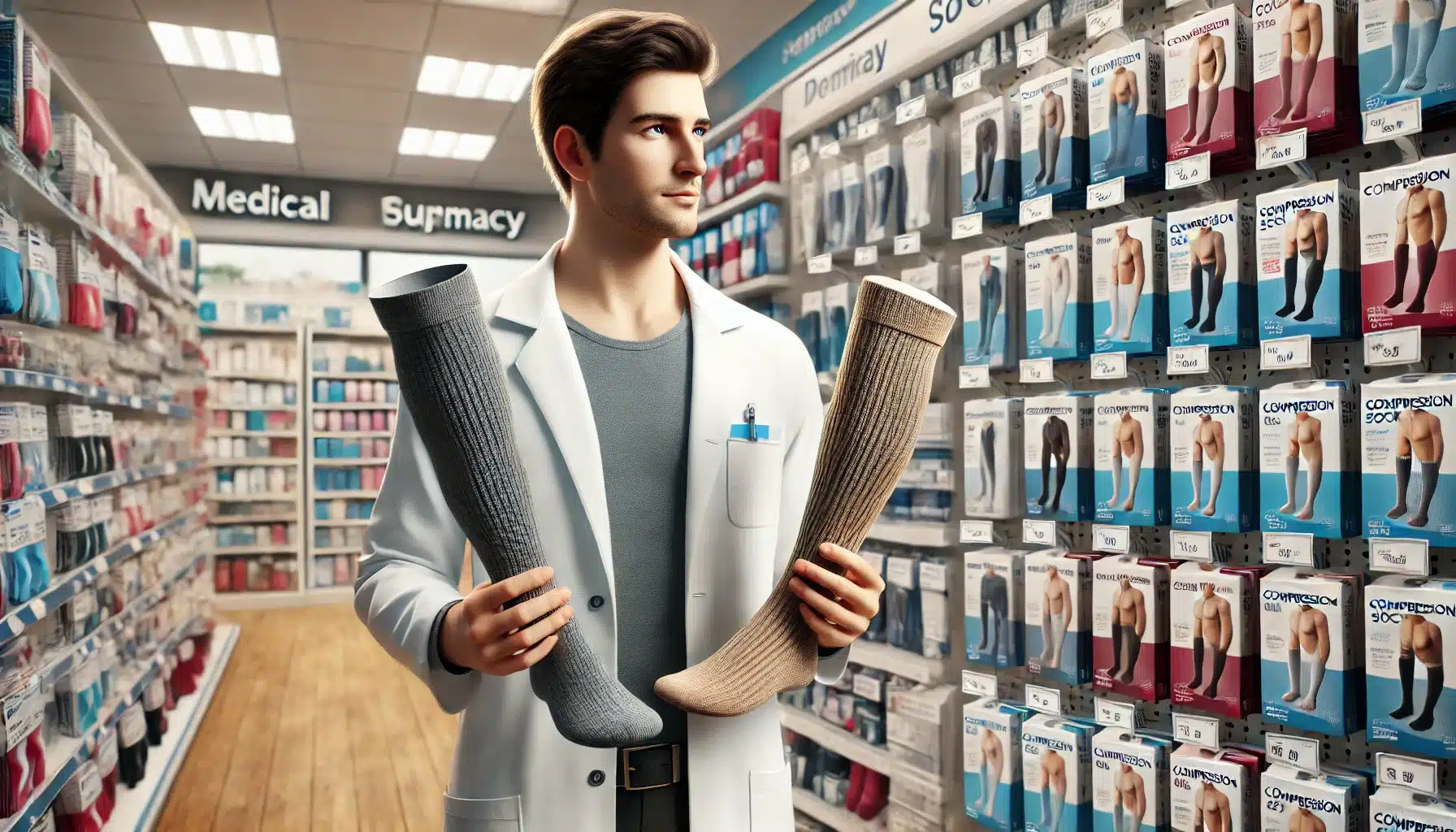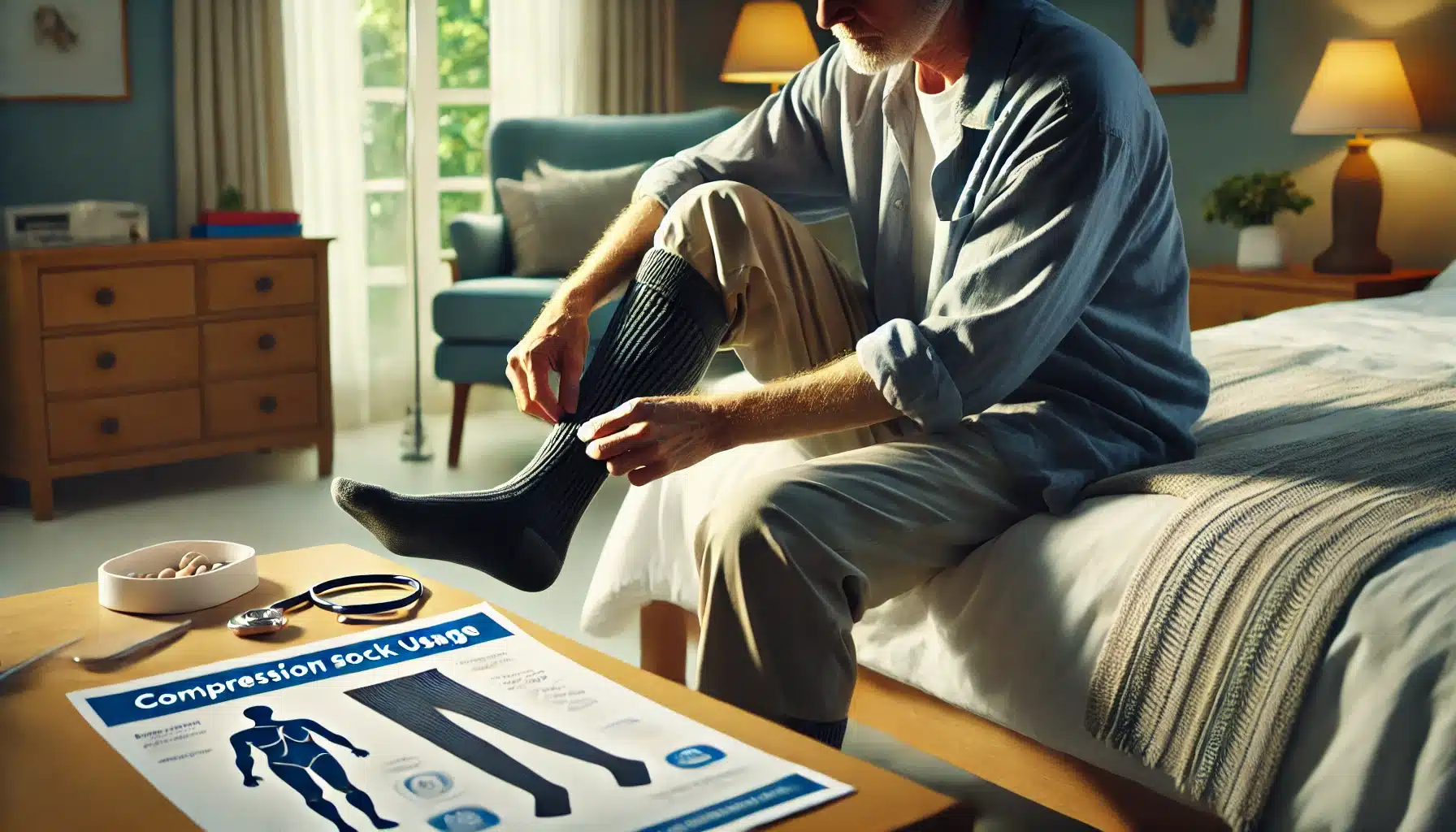Solved: Do Compression Socks Help with Neuropathy?

Neuropathy can cause discomfort, pain, and numbness, leaving many people searching for relief. One common question is whether compression socks can help manage these symptoms. Research shows that nearly 90% of leg issues, including neuropathy, are linked to poor circulation and vein problems.
This article discusses compression socks, how they work, their usefulness in treating neuropathy, and tips on selecting a suitable pair.
Understanding Neuropathy and Compression Socks
What Is Neuropathy?
Neuropathy is nerve damage that affects sensation, movement, and overall functioning. Numbness, tingling, or burning are typical symptoms that tend to be experienced in the hands and feet.
Types of Neuropathy:
- Peripheral neuropathy – Involves nerves not in the brain or spinal cord, usually in the hands and feet.
- Diabetic neuropathy – A consequence of high blood sugar over a long period, resulting in nerve damage.
- Neuropathy due to compression – Caused by compression of nerves, as in the case of carpal tunnel syndrome.
How Do Compression Socks Work?
Compression socks exert light pressure on the leg, which helps maintain blood flow and prevent swelling. The compression also effectively pushes blood towards the heart, enhancing blood circulation and fluid collection in the lower body.
They are especially effective in diabetic neuropathy treatments, in which reduced blood supply can magnify symptoms.

Benefits of Compression Socks for Neuropathy
| Benefit | Explanation |
|---|---|
| Improved Circulation | Helps veins push blood more effectively, reducing symptoms like numbness and tingling. |
| Reduced Swelling | Prevents fluid buildup, which can worsen discomfort and mobility issues. |
| Pain Relief | Eases nerve-related pain by promoting better oxygen flow to affected areas. |
| Prevention of Complications | Lowers the risk of ulcers and infections caused by poor circulation. |
Choosing the Right Compression Socks
Compression Levels and Fit
Compression socks come in various pressure levels measured in millimeters of mercury (mmHg):
Mild (8–15 mmHg) – Suitable for mild discomfort and daily use.
Moderate (15–20 mmHg) – Helps with swelling and circulation issues.
Firm (20–30 mmHg) – Often recommended for diabetic neuropathy and moderate vein problems.
Medical-grade (30–40 mmHg) – Used for severe swelling and chronic circulation issues; should be prescribed by a doctor.
Ensuring the right fit is essential. Socks that are too tight can restrict circulation, while loose ones won’t provide benefits.
Material and Comfort
Look for socks made from breathable, moisture-wicking materials such as:
Nylon and spandex blends – Provide durability and flexibility.
Cotton blends – Offer softness and moisture control.
Copper-infused fabrics – May help reduce odor and improve circulation.
Style and Design Options
Compression socks come in various styles to suit different needs:
Traditional knee-high socks – Ideal for full lower-leg support.
Open-toe designs – Provide more flexibility and comfort.
Athletic compression socks – Designed for active individuals who need extra support.
Dress socks – Blend compression benefits with professional styling.

How to Use Compression Socks Effectively
Wear Them Consistently
For the best results, compression socks should be worn daily, especially when standing or sitting for long periods.
Proper Care and Maintenance
Wash socks regularly to maintain elasticity and hygiene.
Replace them every 3 to 6 months as they lose effectiveness over time.
Store them properly to prevent overstretching or damage.
Consult a Healthcare Professional
A doctor can help determine the right compression level and style for your needs. Based on your symptoms, they can also guide you on how long to wear them each day.
Conclusion
Compression socks can provide significant relief for individuals with neuropathy by improving circulation, reducing swelling, and easing pain. Choosing the right pair with the proper fit and compression level is essential for maximizing their benefits. When used correctly, they can be an effective addition to neuropathy management, but it’s always best to consult a healthcare professional for personalized advice.

About the Author
Dr. Zach Bruley, D.C., is the founder of Advantage Health Center in Eau Claire, WI, and a graduate of Northwestern Health Sciences University. Dedicated to a neurologically based approach, he holds advanced certification in the Torque Release Technique (TRT) and specializes in non-invasive protocols for Neuropathy and Spinal Decompression. Drawing on his background as a competitive athlete, Dr. Bruley established the clinic to provide precise, instrument-based care that supports the body’s natural ability to heal and perform at its peak.



